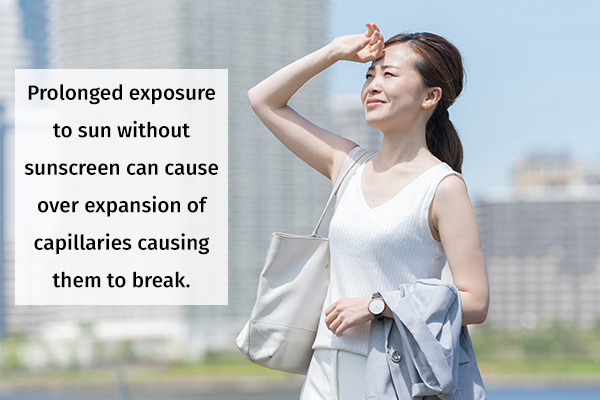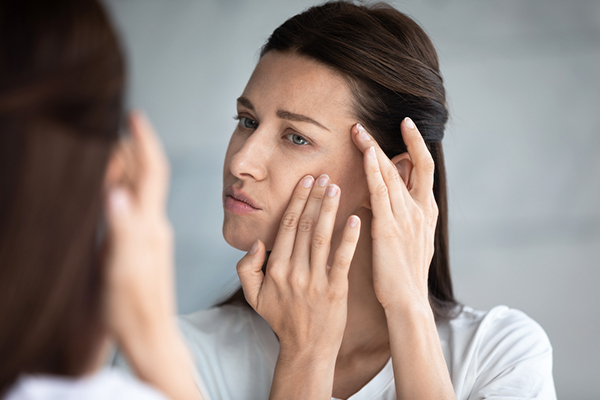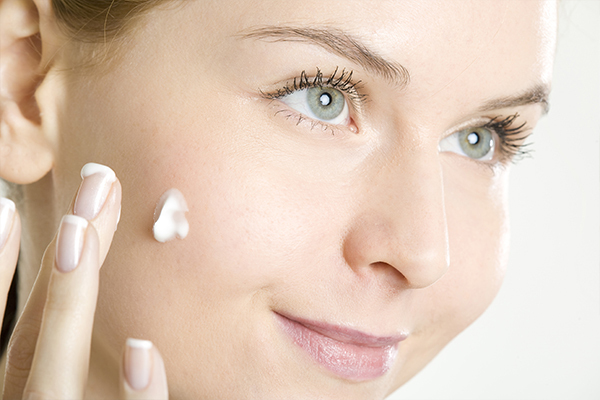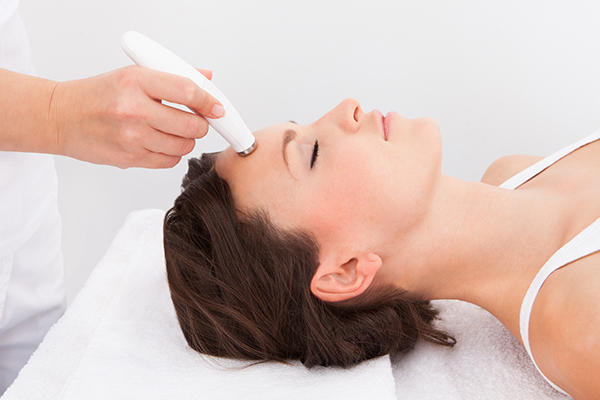In this article:
Broken capillaries are not painful or life threatening but can lead to the appearance of unsightly reddish or bluish webs on the skin. If they develop on your face, they can be hard to ignore.

This article will help you understand the factors that might trigger this condition, how to avoid it, and the available treatments if it does occur.
Causes of Broken Capillaries Under the Skin
In a healthy body, normal-functioning blood vessels constantly expand and contract to accommodate different amounts of blood. Capillaries act as connectors between the veins and arteries in the circulatory system. (1)
The tiniest blood vessels in the human body, capillaries are understandably quite delicate. When these vessels become enlarged or dilated, more blood rushes through them, exerting greater weight against their walls, causing ruptures. As the blood leaks into the surrounding tissue, the overlying skin appears red.
Plus, the broken capillaries appear as reddish-blue lines on the surface, mainly because they lie just below the surface of the skin.
Broken capillaries can develop anywhere on the body but are most prominent around the nose, cheeks, and lips. (2)
Quite a few causes might lead to this phenomenon:
1. Genetics
If someone in your family frequently suffers from broken capillaries, you may be more susceptible to them too. Predisposition to this condition is passed down through generations, and therefore some people are more prone to it by birth.
2. Prolonged sun exposure

Prolonged exposure to the sun without sunscreen can cause overexpansion of capillaries, causing them to break. Also, if you are sunburnt, the skin in the affected area starts to peel off and thereby become thinner. As a result, broken capillaries underneath the surface become even more prominent.
3. Alcohol abuse
Your brain regulates the functioning of all the blood vessels in the body. Drinking too much alcohol interferes with this control and leads to enlarged blood vessels, which might trigger telangiectasia. This is also the reason a persistently red face is one of the earliest signs of alcohol abuse.
4. Sneezing or coughing
People who are naturally prone to broken capillaries may develop them after a strong sneeze or cough. The sudden forceful pressure can rupture the blood vessels.
5. Sudden exposure to extreme temperatures
Exposure to high temperatures, such as in saunas or steam baths and during the peak of summer, might dilate the capillaries to the extent of breakage.
6. Overuse of steroid creams
Steroids stimulate the proliferation of endothelial cells that compose the insides of your blood vessels. This makes your capillaries expand, often to the point of rupturing. (3)
Whilst topical corticosteroids (creams, ointments, and lotions) are helpful in the management of inflammatory skin disorders, overusing them can cause thinning or atrophy of the skin (due to the reduction of collagen) and prominent telangiectasia.
7. Aging

Your blood vessels get their flexibility from a structural protein called collagen, which is also the most abundant component of the skin. But there is a progressive decline in the body’s collagen-building capacity with age. Thus, your skin becomes thinner and more see-through, as is evident in elderly populations.
Plus, your blood vessels become less elastic and therefore prone to breakage. Both these factors increase the probability and visibility of broken capillaries.
8. Medical condition
Rosacea is an inflammatory skin condition characterized by blushing or reddening of the skin in patches that might last for weeks at a time. The skin inflammation also makes the blood vessels expand and become more visible on the surface. (4)
9. Pregnancy
Pregnancy triggers hormonal changes in the body, including a rise in estrogen levels. Estrogen is a female hormone, an excess of which can induce spider telangiectasia, a condition wherein the broken capillaries appear as a fine reddish web under the skin. Fortunately, this pregnancy-specific skin problem usually resolves post-partum.
10. Excessive scrubbing with harsh cleansers
Overscrubbing with harsh exfoliants can damage the skin and the capillaries underneath it. Not only does it lead to broken capillaries, but also it weakens the top layer of the skin, making the reddish splotches even more visible.
Treatment Modalities for Broken Capillaries
If you are genetically predisposed to developing broken capillaries, there is no permanent cure for your condition. However, there are treatment modalities that can reduce the frequency and severity of the problem.
Your treatment plan will have to be customized according to your diagnosis. Here are some of the commonly used interventions for treating broken capillaries:
Topical treatments:

If you are suffering from prominent telangiectasia, you can significantly benefit from these topical treatment options that gradually fade the visible signs of the disorder:
1. Retinoid creams
Retinoids are derivative compounds of vitamin A that have been scientifically proven to increase the production of collagen, the most important and abundant structural protein in skin cells. More collagen leads to faster skin cell production and proliferation, leading to faster skin repair. (5)
Plus, collagen adds volume to the skin in the treated area. As the skin becomes thicker, the bruising becomes less apparent.
2. Repair creams
Topical repair creams such as brimonidine work by temporarily shrinking the underlying blood vessels to diminish the redness of the bruise.
3. Peptide creams
Peptide creams boost the quantity and quality of collagen production to help thicken the skin. This automatically reduces the visibility of the broken capillaries on the skin’s surface.
For instance, palmitoyl tripeptide-8 has shown significant effects on the capillaries, reducing the number of dilated vessels by 30% and extent of dilation by 51%. This helps to reduce the frequency and severity of the condition. (6)
4. Vitamin K creams
Vitamin K helps to repair and strengthen the broken capillaries under the skin (7) and it is known to reduce the inflammation caused by telangiectasia and speed up the healing process.
In-office treatments:
Broken blood vessels are a much deeper issue compared to sunspots or scars. Sometimes, more intensive treatments are needed to completely resolve the condition.
The following in-office treatment options are quite intensive and require professional supervision:
1. Intense pulsed light (IPL) therapy
IPL therapy is one of the most popular treatment choices for treating facial telangiectasia. (8) It uses intense pulsed light, which skips the surface layer of the skin and directly penetrates the second layer underneath. It directly damages and disintegrates the broken blood vessels in this layer.
Since the energy of the pulsed light is distributed over a larger target area, this treatment covers larger portions of skin in a single session. (9)
2. Laser treatment

A diode laser is used to heat up the damaged blood vessels with moderate pulses of light, leading to the collapse of the vessels without harming the surrounding skin. (10) After the therapy, tissue from the collapsed vessels just dissolves, leaving no trace of the telangiectasia on the skin.
3. Sclerotherapy
Sclerotherapy is a noninvasive procedure where sclerosing chemicals, such as tetradecyl sulfate, polidocanol, and hypertonic saline solutions, are injected into the damaged blood vessels to erase them. (11)
The sclerosing agents obstruct the blood flow in the blood vessels, eventually causing their reabsorption by the body. (11) Thus, this treatment leaves no traces of the broken capillaries in the area.
Diagnosing Broken Capillaries

Broken capillaries cause characteristic bruising that can be identified by doctors simply by looking at them. So, doctors closely examine the bruise to diagnose broken capillaries and determine the extent of damage.
This examination may be followed by a series of questions regarding your lifestyle, the products you use on your skin, the medications you are taking, and your diet. Your answers will help the doctor understand the reason for this vascular damage, and then your doctor will recommend the appropriate treatment accordingly.
Final Word
Once your capillaries are damaged, the only way forward is to remove the traces of the shattered vessels. There is no way to restore them to normal function anymore.
It is easier to prevent broken capillaries than to heal them. However, you have to follow the right techniques and remedies for this. If the problem persists, do not hesitate to visit a doctor.

- Was this article helpful?
- YES, THANKS!NOT REALLY


